|
|
Shiitake Mushroom (Lentinula edodes)
|
|
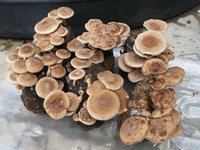 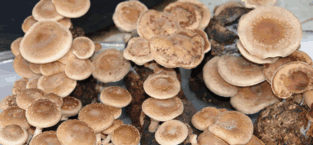 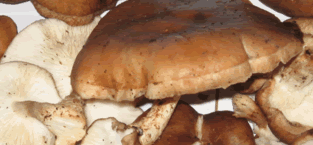
|
|
|
|
Shiitake Mushroom (Lentinula edodes)
The Japanese wood mushroom Lentinula edodes,commnly called as shiitake is most popular and important cultivated
mushroom in Japan. It is the 2nd largest mushroom cultivated in the world after Agaricus bisporus. In 1994, its annual production was about 8,26,200 tonnes out of which 63,200 MT is produced in China
alone. It is liked by the consumers because of its unique taste and flavour and presence of a chemical which reduces plasma cholesterol level. It is mainly cultivated in Japan, People's republic
of China, Taiwan, S. Korea and United State of America. It grows in nature on the wood of broad leaf trees mainly oak and chestnut.
|
|
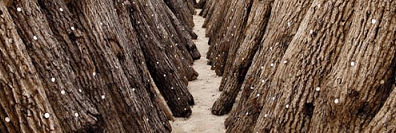  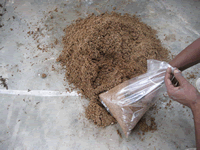
|
|
|
|
CULTIVATION TECHNIQUE ON WOOD LOGS
Lentinula edodes grows in nature on the dead wood of a number of hard wood trees.
LOG PREPARATION
The Lentinula edodes mycelium is saprophytic and wood rotting. It mainly grows on dried wooden logs absorbing nutrients
from the cambiun. The outer back layer protects the growing mycelium from the various mould competitors. Although it grows on any size and age of logs, but the log with 9-18 cm diameter and from 15
to 20 years old tree are most suitable. The time of failing or cutting the trees is also equally important. The most suitable period is from autumn
(December-January) to early spring when the
logs contain highest amount of carbohydrates and other organic substrates. The felled logs are left as such for 25-45 days which results in the lowering the moisture contents to 40-45%. Sometimes the
logs are immediately inoculated, if the moisture content is optimum and further drying will result in excessive moisture loss.
SPAWNING THE LOGS
The shiitake mycelium grows between 5 to 30C but the most optimum temperature is 20-26C. Low temperatures (14-20C) are
favored during spawning logs, so that there is minimum growth of mould competitors. For spawn inoculation, small holes of 1x1cm and 1.5 to 2cm deep are made on the logs with the help of drilling
machine. The holes are made at a distance of 20-30cm (long axis) and 6cm between each row. The holes between two rows, are alternate in position. Saw dust spawn is filled in the holes or wood plug
spawn is inserted by cutting out similar size pieces. The saw dust spawn should be kept soft and not tightly pressed. The holes are sealed with paraffin wax. The spawning should be mostly done in
aseptic condition.
|
|
    
|
|
|
|
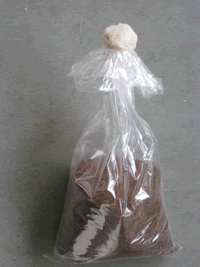 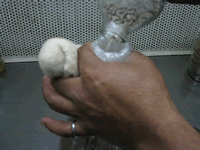 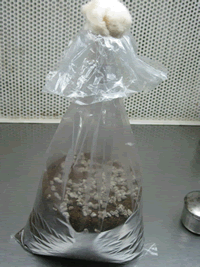 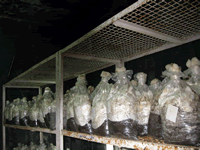  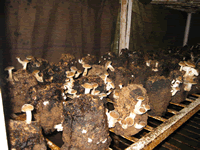
|
|
CROP MANAGEMENT
Inoculated logs are kept in open at a place where the physical conditions are most favorable for the mycelial growth.
The inoculated logs are kept in a flat pile so that there is minimum light exposure. The pile should be covered with either straw, or gunny bags to prevent excessive water loss of the logs. The
vegetative growth in the logs will be completed within 8-12 months depending upon the culture strain and the type of wood used.
For fruit body induction it requires, temperature shock of temperature drop, high humidity and enough light. The logs
for fruiting are either sprayed with cold water or immersed in a tank of cold water. If the logs are immersed in cold water, then during summer they should be kept for 24 hours in cold water (15-18C)
while during winter they should be kept for 2-3 days at 10-15C.
The logs are then leaned against the supports. The cropping area is kept moist to maintain high relative humidity. The
temperature should be 15-20C and humidity around 80-90%. Fruit bodies are harvested by first pressing and then twisting. Mushrooms are harvested up to 3 times and after a rest for 30-40 days they
again watered to get more mushrooms. It can be repeated up to 3-4 times per year and these logs will produce crop up to 4-6 years.
|
|
|
|
 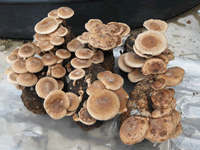    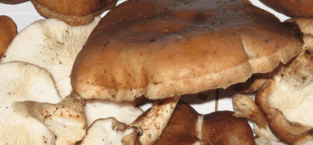
|
|
|
|
Harvesting
The stalks of the mushrooms are taken and broken from the substrate. They should not be torn from the surface. These
should be harvested at an early stage. The scars left should not be watered for 3-4 days. Normal yields are 15-30% of the wet weight of the substrate.
|
|
|
- Concept by : Director, DMR
- Contents : Dr. B. Vijay, Principal Scientist
- (c) Copyright. All rights reserved. DMR, Solan, HP Designed by Deepak Sharma, AKMU
|
|
|